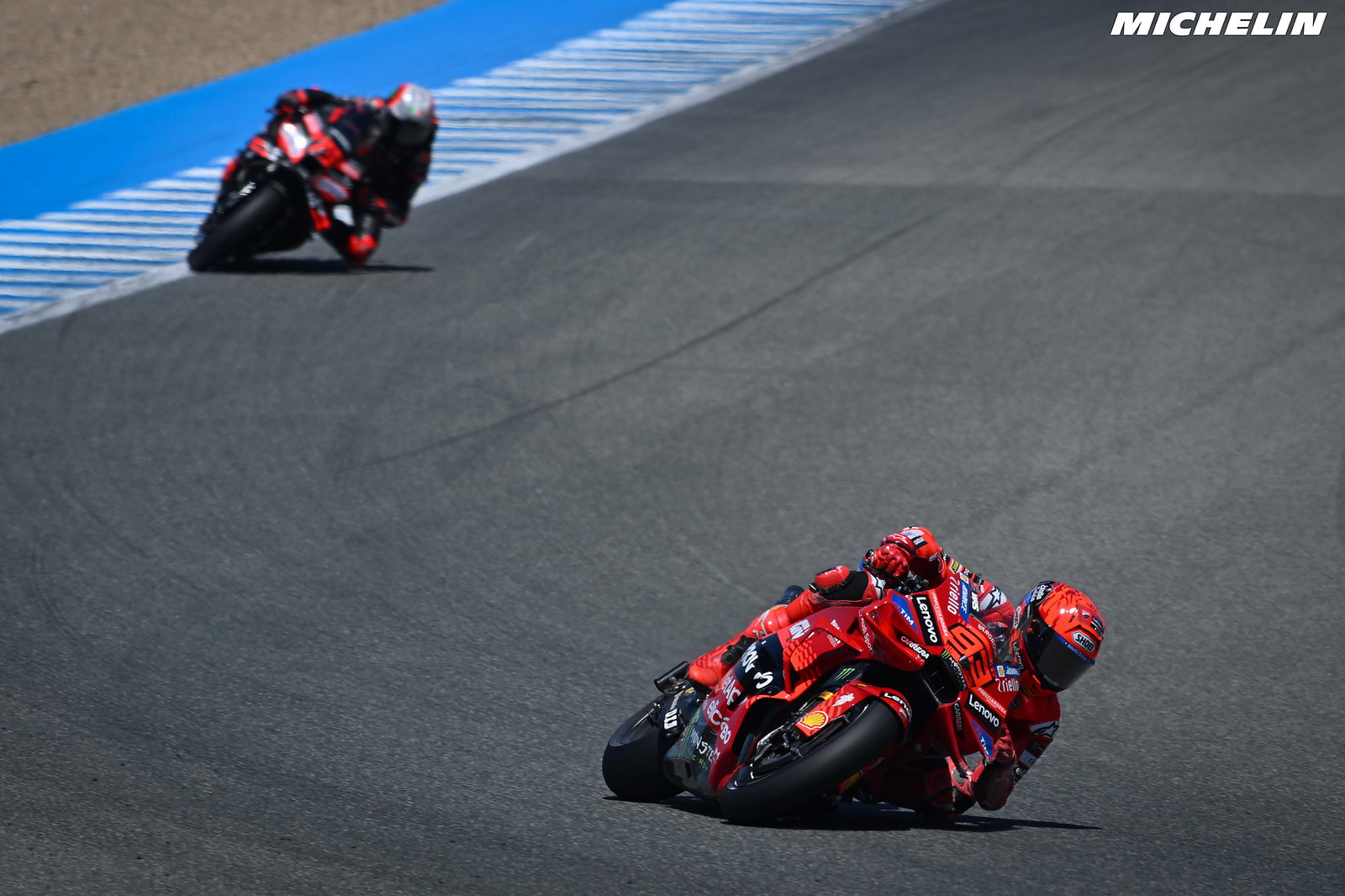
A Baffling Fall in Jerez:
On lap 3 of the Jerez GP race, Marc Márquez crashed while running in third place, losing the front in Turn 8. His bike slid into the gravel, and although he managed to rejoin the race and finish 12th, it was a major setback for a rider expected to contend for the title. According to Márquez himself, he was “cruising” at the time, not pushing to the limit while chasing Francesco Bagnaia and Fabio Quartararo. That made the “sudden” front-end loss all the more puzzling. After the race, Márquez admitted, “I don’t know the cause.”
GP25’s Front-End Feel Under Scrutiny:
Speculation about the cause of the crash points to the presence of a bike ahead. With the evolution of MotoGP aerodynamics, it’s well-known that modern machines are significantly affected by turbulent air from leading bikes. One common issue is during braking in the slipstream, where reduced air resistance can cause a rider to misjudge the braking point. Riders often discuss being “sucked in” toward the bike ahead.
Márquez’s front-end crash could be related to such slipstream effects. Riding closely behind another bike can reduce cooling airflow to the front tire, increase tire temperature and pressure, or destabilize front-end loading. Comments from both Bagnaia and Márquez after Jerez suggest that these conditions are particularly delicate with the GP25.
Francesco Bagnaia, who finished second, was notably confused during the race. While chasing Yamaha’s Fabio Quartararo, he complained of a loss of front-end feel, saying “it felt completely different from last year.” Despite multiple chances to overtake Quartararo, Bagnaia said he was never able to capitalize: “Every time I got close, I lost the front and couldn’t do anything.” He added that unlike last year—when he followed Jorge Martin for more than 10 laps—this year, having another rider ahead made the front feel soft and unstable.
Márquez May Have Experienced the Same Issue:
While Márquez noted the crash might have been due to “leaning one degree too far,” the similarity to Bagnaia’s front-end complaints suggests a shared underlying issue. Excluding his crash on a wet curb in Austin, this was Márquez’s first mysterious fall of the season—one that occurred in the presence of a lead rider.
Despite his exceptional sensitivity to front tire behavior, Márquez is now contending with a MotoGP world where aerodynamically generated downforce creates extremely subtle balance shifts. Even an amateur can imagine how turbulence from another rider might disrupt braking or cornering. Bagnaia described the issue clearly: “The moment I release the brakes while following someone, the front starts sliding.”
Did the Jerez Test Provide a Fix?
Following the Jerez GP, Márquez set the fastest time in post-race testing. However, it’s unknown whether he and his team tested any new parts or settings to address the issue. While Bagnaia hinted that the bike’s balance might need a rethink, there’s been no word from the Márquez camp on how—or whether—they’re tackling the problem.
This weekend’s French GP takes place at Le Mans, a track where Ducati has traditionally performed well. For Márquez, a repeat crash is out of the question. While it’s reasonable to assume he and his team are analyzing and addressing the problem, fans might find it especially interesting to watch the sprint and main races with one question in mind: Is there a rider in front of him?
(Photo courtesy of Michelin)